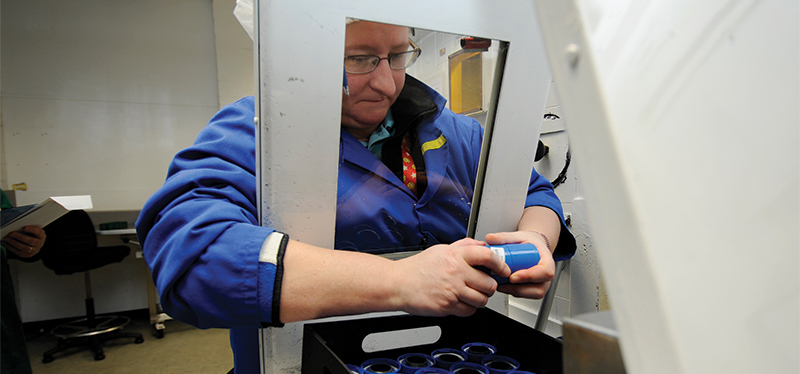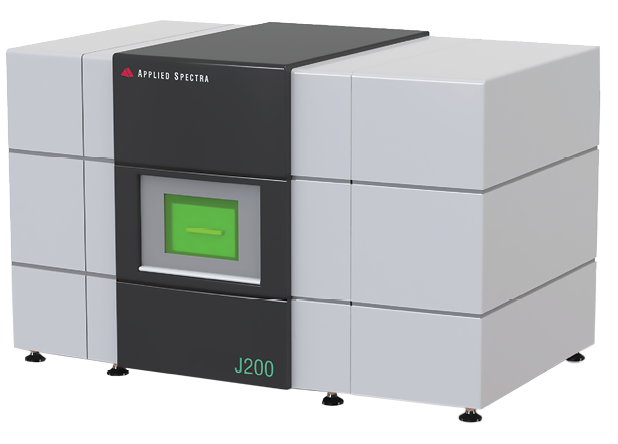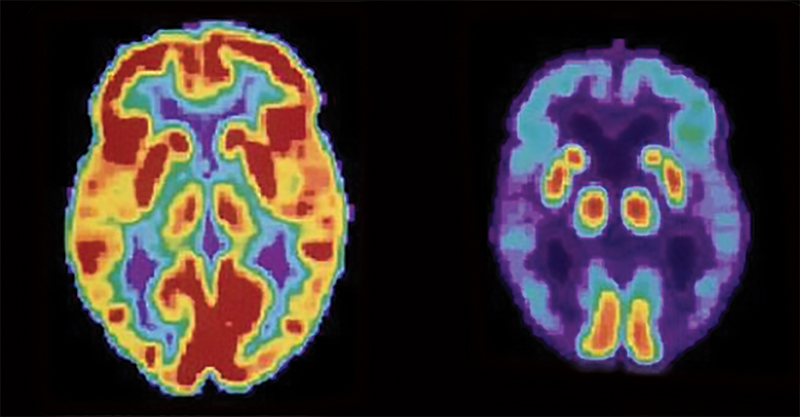
Detailed Spectrometry Makes Dangerous-Materials Testing Safer
NASA Technology
In Chris McKay’s search for signs of life on other worlds, some of the strongest clues can be found by identifying isotopes.
The Ames Research Center planetary scientist says his favorite isotopes are those of carbon, sulfur, and nitrogen, in that order, “because biology does interesting things with them and leaves an isotopic signature.” For example, he says, the ratio of different isotopes in a carbon sample can reveal whether it’s a product of biology. And his favorite compound is water, which carries isotopic evidence of its many phase changes between gas, liquid, and solid.
The Mars Curiosity rover, for which McKay is a co-investigator, has a mass spectrometer that can identify some of these isotopes, but it has its disadvantages. It has to physically collect a sample and then use turbopumps to create a vacuum in which to analyze it. The spectrometer’s lifespan will likely be determined by how long the turbopumps last, McKay says, noting that researchers are forced to make tough choices about which samples are worth analyzing. In its first five years, Curiosity only tested about 15 samples with the instrument.
By contrast, another of the rover’s tools has run more than 15,000 analyses. The laser spectrometer can zap any surface from a distance and determine its chemical content by observing the resulting flash. For a few brief nanoseconds, the surface molecules are ripped apart in a burst brighter than the surface of the sun, and as they reassemble, still blazing, they reveal their identities to an optical spectrometer. Every substance emits a different light signature as its molecules reconstitute. Curiosity’s laser spectrometer can quickly and easily analyze hundreds of surfaces without the rover moving an inch, and with no moving parts, it’s likely to far outlive the mass spectrometer, even while being used much more heavily. This technique, known as laser-induced breakdown spectroscopy (LIBS), has been used for decades.
But a laser ablation spectrometer can only identify chemical elements, not their isotopes. It is blind to much of the information encoded in its test subjects, missing many of the clues McKay relies on in his search for extraterrestrial life.
So in the early 2000s, Alexander Bolshakov, then a senior researcher at Ames, proposed fine-tuning LIBS technology to the point that it could recognize even the slight shifts in electrons that result from varying numbers of neutrons in an atom’s core—to spot isotopes, in other words.
But he had trouble getting funding.
Technology Transfer
“Nobody actually believed that this was possible,” Bolshakov recalls. He finally got a two-year National Research Council grant that let him start work at Ames. Then, in 2007, he left NASA to join Fremont, California-based Applied Spectra, which applied for and won a series of Small Business Innovation Research (SBIR) contracts with Ames to continue the work.
But even McKay, who lobbied for the SBIR funding and oversaw the contracts, had his doubts.
“No, I didn’t believe it could be done,” McKay says. “But I thought if it could be done, Rick and Alex could get it done, and I thought it was worth a try. I saw the importance of it.” (Rick is Richard Russo, founder and executive chairman at Applied Spectra.)
The problem was that laser ablation spectroscopy is “a pretty blunt-force technique,” McKay says, while the difference between isotopes is subtle. He compares it to firing two similar cannonballs at each other and trying to observe which is heavier.
For one thing, the moment when molecules in a laser-zapped sample reconstruct themselves while continuing to emit light is exceedingly brief. To have a chance at identifying isotopes, that time window had to be extended as much as possible, and the spectrometer watching it had to focus exclusively on that moment with the highest spectral resolution possible. The engineers had to shape and control the laser pulse, use the right detection sensors, and program them to observe just the right moment and the right wavelengths.
“Turns out, they did it,” McKay says.
Applied Spectra calls the result Laser Ablation Molecular Isotopic Spectrometry (LAMIS).
Benefits
Just as isotopic signatures could reveal a trove of information in McKay’s search for evidence of extraterrestrial life, they are already mined for all kinds of data here on Earth. This is the key to carbon dating, for example, which counts carbon-14 isotopes to determine the age of archaeological specimens and the dates of major events like ice ages. Forensic investigators measure isotopes to match samples of hair, fabric, and other evidence.
LAMIS should prove useful in these applications, but its big advantage over existing technology is that it can analyze samples without having to collect or even approach them. This is why Bolshakov thinks its most widespread application will be in characterizing radioactive material used in fields like nuclear energy and nuclear medicine—dangerous material that’s better tested from afar.
“Some isotopes are not dangerous. Others can cause mass destruction,” he points out, emphasizing the need to keep an eye on these materials, even while they can harm the observer.
The technology could also be useful where it’s not practical to collect a sample of the material in question. For example, the shields used in nuclear cancer detection and therapy are regularly replaced because they degrade over time. To test whether the shield needs replacing, a conventional mass spectrometer would require an actual sample for analysis, which is impractical. A LAMIS spectrometer would allow them to be tested and replaced only when necessary.
Remote detection of isotopes could also be used to enforce nuclear nonproliferation agreements, as well as to trace other illegal substances, Bolshakov says.
McKay says detecting explosives is another application where remote sensing would come in handy, and he notes that the Department of Homeland Security has expressed interest in the technology. Applied Spectra also received funding from the Department of Energy, which is interested in LAMIS for contaminated soil analysis. Even where remote sensing isn’t necessary, the technology would provide convenience and fast results, in part by eliminating the work of sample preparation.
The company has sold its first units to a university and one company: the University of Central Florida’s National Center for Forensic Science purchased one, as did Honeywell, which is interested in developing a LAMIS/LIBS hybrid. Several other universities have expressed interest, and Applied Spectra expects to participate in at least some of the academic efforts to advance the technology. Other universities in the United States and Europe are working on their own versions, based on the company’s published papers.
The technology won the company a 2011 Innovation Award from the Federation of Analytical Chemistry and Spectroscopy Societies and a 2012 R&D 100 award.
For NASA’s part, McKay looks forward to the day when planetary rovers will be able to learn more about the worlds around them with all the ease and efficiency of Curiosity’s laser spectrometer.
“To me, this is a good example of the SBIR program at its best,” he says, noting that the Agency took a chance on a long shot that the private sector might not have been willing to invest in, and it’s paying off. “There’s a lot of talent and ingenuity at these companies, and NASA can benefit from that with relatively small grants.”

With SBIR funding from Ames Research Center, Applied Spectra was able to build the first device that uses laser ablation to detect different isotopes of an element. The technology will need further development, but the company has sold units to a university and a major corporation.

One application of radiopharmaceuticals is in positron emission tomography (PET) scan imaging. Here PET scans show the difference between a normal brain (left) and the brain of a patient with Alzheimer’s disease. Image courtesy of the National Institute on Aging

A technician packages radioactive pharmaceuticals into shielded containers. One possible application for Applied Spectra’s Laser Ablation Molecular Isotopic Spectrometry technology is in nuclear medicine, where it could be used to remotely inspect radioactive materials. Image courtesy of Dean Calma, International Atomic Energy Agency













